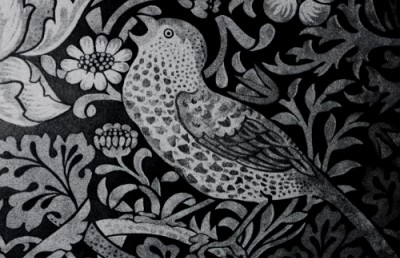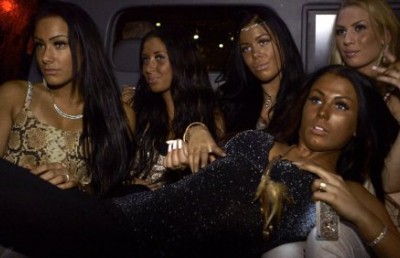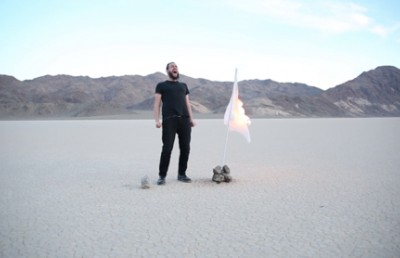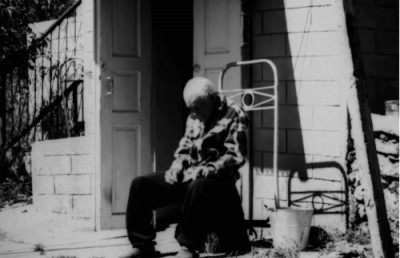On Chooka (2018)
Recognition: A film by Parastoo Anoushahpour, Faraz Anoushahpour and Ryan Ferko
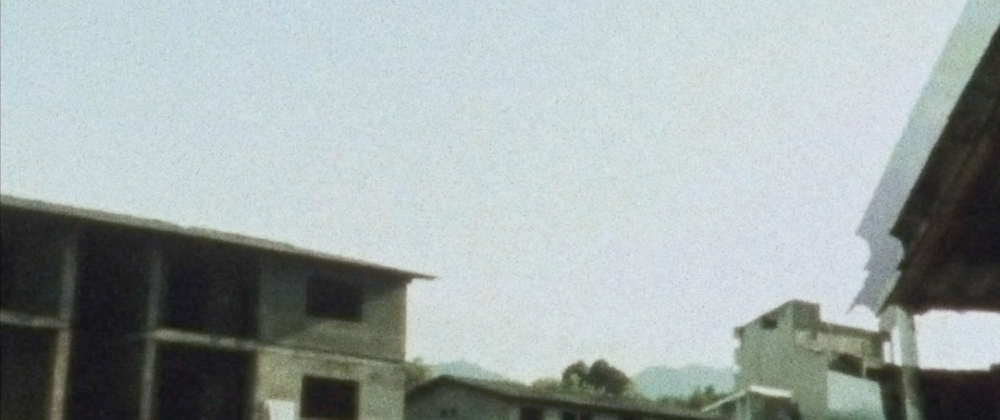
This text is presented as part of the CRITIQUES series, organized and presented by VISIONS, in collaboration with Hors champ and Offscreen.
Translated from the original French by Olga Montes
If a landscape trembles, it is because a story buries the turmoil. The fog must then be faced head-on, not so that it dissipates, but so as to be absorbed. And then even without really knowing, not even the short of it, we understand. Understanding means always grasping what hides between the lines. Between the layers of fog. Here, between the images laid out in mosaic. In the reel of life. Between the photos that we slip between our fingers, the faces we identify, a house we find, a child who watches, remembers. And on the screens we touch, in front of which we lie, films from another time suddenly emerge and come forward. Children turn to look at us. Every space, we are convinced, is haunted. And, before this film, we stand as strangers searching for something.
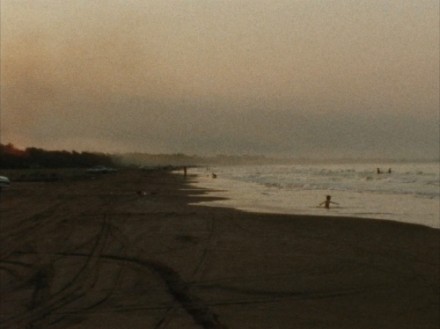
I recall a scene from Chooka, the subject of this piece, in which a subjective camera is used to explore an old dilapidated schoolhouse, where flames have scorched the corners of the walls. Set in the province of Gilan, in northern Iran, the blown out windows reveal a green, humid world where the fog, it seems, will never quite lift. On the walls, a few green ceramic tiles still hold. The remaining thousands have peeled off and shattered to the ground, like shells spattered from the sea. The sound of the filmmaker’s footfalls on the ceramic is slow, soft, yet the cracking nevertheless echoes deeply, is stamped in memory, and the viewer suddenly and unwittingly becomes melancholy. May the simple analogy between these anonymous, indiscriminate ceramic tiles and the lives of all those that this story has unearthed without digging deeper be perhaps too easy to feel? This sound – precise, tangible, yet at the same time inconspicuous – unleashes an astonishing burst of violence that the film otherwise stifles. It evokes the crackling of the fire that has set the building ablaze, the sound of dry wood from the story that crumbles as it is leafed through, recalls the rain that falls impervious to all this turmoil that is comprised of cement, exile and fleeing in the night. It is also tempting to spin the allegory. For what do the filmmakers of this beautiful film do, if not put together the proverbial “pieces of the puzzle”, while admitting that this story will always include gaps? These pathetic ceramic walls also recall the photomontages strewn on the carpet, which try to match up places, images, and time. But something will always be missing. Faces will remain forgotten. A part of the story left untold. The witness who saw is no longer there to speak. In the burned building, the film – having reached the end of the reel – suddenly glows and fades away. Only ghosts remain.
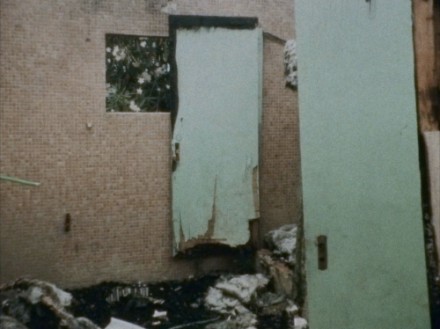
On the screen, other screens light up, creating another space. In the frame, other frames deconstruct another time within the same place. 16 mm film intermixes with shaky surveillance camera video footage. 16 mm shots display a parade of bearded demonstrators viewed on an iPhone. The film is replete with intermingled image schemes. Outdated faces forever seized by small forgotten films. The bright red robe indicates that it has been shot using Kodachrome film. It is 1970, before the Revolution. A factory is inaugurated. A worker who had experienced that era tells us that foreigners used to live here. Canadians. Americans. A magnificent wide shot of this factory, its huge press rolls spinning, fills the frame. You may think they were making plastic film, celluloid even, instead of paper.
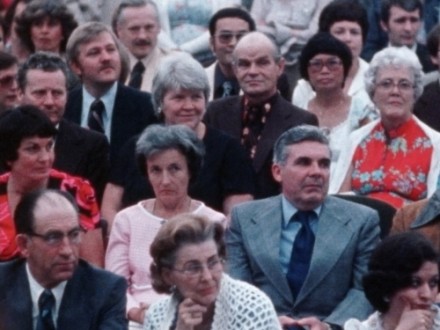
This factory run by foreigners – the text on the screen tells us – began operations in 1973, not long before filmmaker Bahram Beyzaie came to shoot Stranger and the Fog. And it was also in this same region that, after the Revolution, Beyzaie directed one of the classics of the Second New Wave of Iranian cinema, Bashu, the Little Stranger – about an orphan who has fled the South and the war and ends up in the north, industrial, cold. Another story of strangers and fog. These landscapes, from bygone days, scroll across a computer screen, laid out on a carpet. We learn – indirectly, for everything in the film is suggested – that the Chooka filmmakers have stumbled upon the house and the family that hosted that film crew. The grandfather passed away, but the grandmother remembers. A young boy, the grandson, gives Farsi lessons to one of the filmmakers, who has come with his friends to piece the story together. The boy takes us on a tour of the grounds around his house by sifting through surveillance footage. The tree he points at with his mouse, he tells us, has yielded much fruit this year.
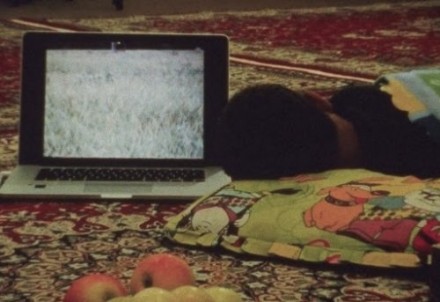
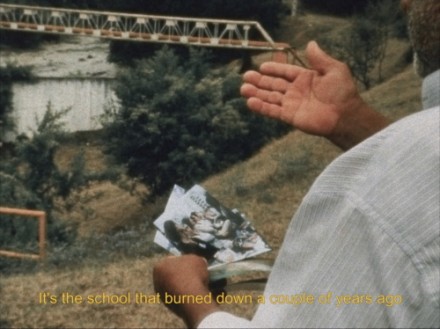
Dialogue and images provide snippets of history. But a finger pointing, a small arrow to indicate a name, an attentive glance must prevail so that a layer of memory can unfold and unravel like the tall trees quivering in the fog that the camera captures. The film’s strength lies in a type of gentleness, which neither proclaims nor condemns anything in particular (neither the invasion of foreign capital, nor the Mullah regime). It merely lays out the fragments of a family album that has survived oblivion and tries to fill in the gaps by revisiting the cracks that time has concealed. Like a stranger, it invites us into a home, a memory. And extends us a little hospitality.
Time sensitive screening link at la lumière collective
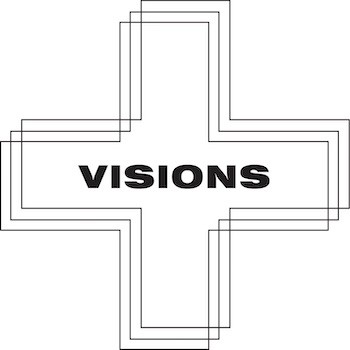
VISIONS is a series of monthly screenings devoted to experimental documentary cinema and artists specializing in moving images. Curated by Benjamin R. Taylor in Montreal since 2014, VISIONS presents these films in various venues and in collaboration with local festivals such as the Cinémathèque québécoise, la lumière collective, être, Ex-Centris, RIDM, FNC, POP Montreal and Cinéma moderne. Filmmakers always attend screenings and we help them travel to/within Canada by organizing screenings, workshops and tours. Films are always presented in their original format. VISIONS also takes part in several international festivals and exhibitions and helps bring creators and the public together.
The online program CRITIQUES is a consequence of VISIONS’ postponed programming activities. Starting from a selection of works initially programmed for the 2020 season, the idea is to bring them into direct conversation with a local writer who is asked to reflect, refract, retrace and reinterpret the work in question. The collected texts are first published in a special edition of Hors champ. Then, each week, a selected work is shown on the new virtual-pandemic-proof screening platform of the local microcinema la lumière collective, together with the text.
Each iteration invites a guest writer to establish a dialogue with the images in his or her own way, with the aim of renewing ideas, provoking conversations, establishing new discourses. At a time when online broadcasting is abundant and boundless, CRITIQUES offers something to read and think about. Something to take with you until we meet again.
Subscribe our mailing list to receive updates on the project.
The CRITIQUES series is presented with the support of the Canada Council for the Arts, the Conseil des arts et lettres du Québec and the Conseil des arts de Montréal.


